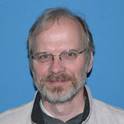
Other
Natural leaking CO2 charged systems as Analogs for Geologic Sequestration.pdf
(2001)
Abstract
We examine the geology, hydrology and geochemistry of a naturally charged CO2 system
in southeastern Utah in order to determine how CO2 gas flows through host rock and water and
the fluxes of gas through an analog sequestration system. Natural CO2 springs lie along two
steeply dipping normal faults that cut Mesozoic shales and sandstones. Several springs occur on
abandoned drill holes. Geochemical studies of the gas and water indicate that the gas is sourced
from at least 1 km depth, and travels nearly vertically along fault zones and abandoned boreholes
to the surface. Surface expressions of the leaks include springs, tufa deposits, and large veins that
formed near the earth’s surface. Modeling of the water chemistry of the Crystal Geyser system
indicates that ~ 60% of the CO2 is released to the atmosphere; only 6 % is trapped in a mineral
phase. Geologic and geochemical evidence suggests that the area has been leaking for at least
several thousand years. The results of this study show that CO2 gas migrates rapidly from depth, and that once
established, CO2 flow paths are able to stay open. It does not appear that mineralization was
rapid enough or thermodynamically favorable to allow the system to seal by precipitation of
carbonate minerals.
Keywords
- CO2,
- faults,
- fault-seal
Disciplines
Publication Date
Spring 2001
Citation Information
Jason Heath, James P. Evans, Zoe K. Shipton, Peter T. Kolesar, et al.. "Natural leaking CO2 charged systems as Analogs for Geologic Sequestration.pdf" (2001) Available at: http://works.bepress.com/james_evans/102/
Creative Commons license

This work is licensed under a Creative Commons CC_BY-NC International License.
